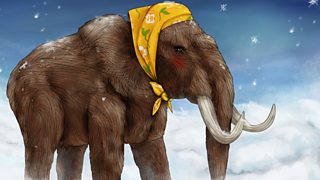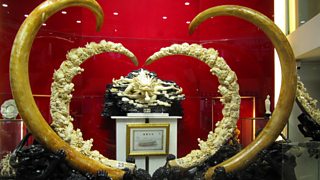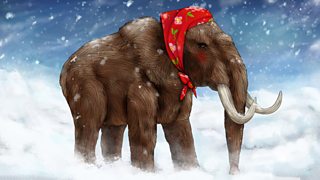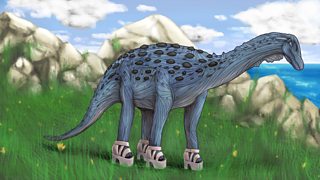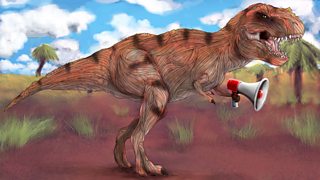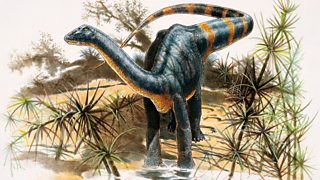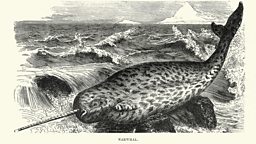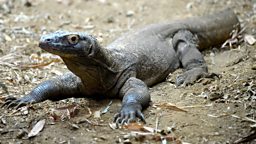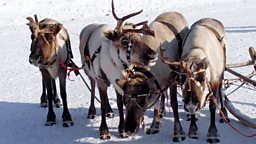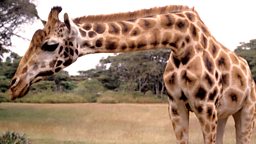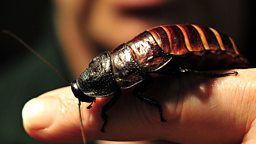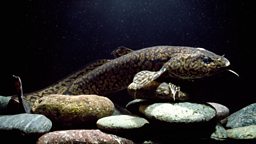13 mammoth facts about mammoths
1. Ivory trade
It is estimated that over 50% of the ivory sold into China is mammoth ivory.

The growing and legal trade in mammoth ivory
Brett Westwood hears how demand for mammoth ivory is growing.
2. Hunted
Evidence suggests that humans hunted mammoths, albeit rarely. They would have been dangerous animals to attack.
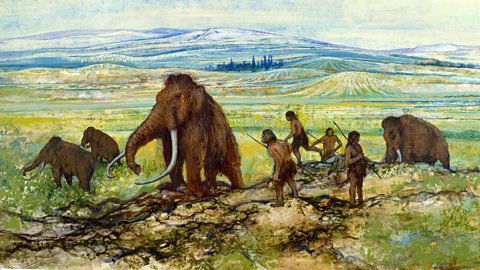
Did humans hunt woolly mammoths?
Prof Adrian Lister tells Brett Westwood about evidence that mammoths were hunted.
3. Mammoth music
One of the is a flute made from mammoth ivory.
4. Wide range
The fossil record suggests mammoths lived on all continents except Australia and South America.
5. Not long gone
Most mammoth populations had died out by around 10,000 years ago although a small population of 500-1000 woolly mammoths lived on Wrangel Island in the Arctic until as recently as 1650 BC. This was approximately 1000 years after the pyramids at Giza were built.
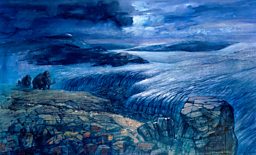
6. Why did mammoths die out?
Some experts think mammoths were hunted to extinction by the species that was to become the planet's dominant predator - humans.
Others argue that climate change was more responsible. As the climate warmed, forests spread and replaced the mammoth's grassland habitat. Hunting by humans may have tipped the balance once mammoth numbers had declined significantly.
A 2016 study suggests that one of the last known groups of woolly mammoths died out because of a lack of drinking water.
7. Mammoth myths
- From the Middle Ages up to the 18th Century, many Europeans believed that the bones of mammoths and mastodons belonged to giants drowned by Noah’s flood.
- Mammoths discovered preserved in the Siberian permafrost were believed to be burrowing animals that avoided sunlight and died when exposed to the sun. It was thought this explained why they showed so little decay.
8. Tree tusks
Scientists can work out a woolly mammoth's age from the rings of its tusk in a similar way to judging a tree’s age from its rings.

9. Mammoth and not-so-mammoth
- Male woolly mammoths were thought to reach shoulder heights of up to 3.5m – roughly the size of an African elephant – and to weigh up to six tonnes.
- The imperial mammoth weighed over 10 tonnes and the Songhua River Mammoth of northern China weighed up to 15 tonnes.
- The extinct dwarf mammoth species, Mammuthus creticus, was only around 1m tall - about the size of a modern African or Asian baby elephant - and weighed approximately 300kg.
10. Essex mammoth
In 1864, a complete woolly mammoth skull was found in Ilford in Essex. It is one of the most spectacular fossils discovered in Britain.
The Ilford mammoth specimen is thought to be around 200,000 years old, living in a relatively warm period between two Ice Ages. The tusks are about 2.5m long and the skull, including the tusks, is around 4m long.
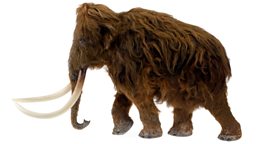
11. Tough tusks
Woolly mammoth tusks were primarily used for fighting and each tusk is so heavy it takes two strong people to lift.
The tusks are larger than those of elephants and have corkscrew-like shapes, sometimes crossing in the middle.
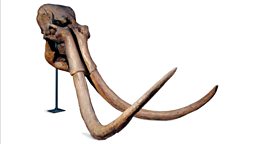
12. Hair today
Scientists used genetic sequencing to establish that mammoth hair was brown.
Preserved mammoth hair looks orange in colour but researchers believe the pigment was darker, closer to black, but lightened with prolonged burial in the ground.
13. Mammoth meat
French adventures heading for the North Pole in 1872 found so many well-preserved mammoth specimens that for a time they lived on mammoth, 'broiled, roasted and baked'.
Source: Natural Histories
Mammoths
-
![]()
A Natural Histories Comedy featuring a size-conscious mammoth.
-
![]()
Brett Westwood hears how demand for mammoth ivory is growing.
-
![]()
Brett Westwood explores the role woolly mammoths have played in our lives.
Dinosaurs
-
![]()
Some had 15cm-long teeth while others had brains the size of a walnut.
-
![]()
Watch a Natural Histories Comedy clip featuring a dwarf dinosaur.
-
![]()
Brett Westwood explores how dinosaurs are influencing our stories, films and science.
-
![]()
Prof Paul Barrett explains how dwarfing affected dinosaurs as well as modern animals.
